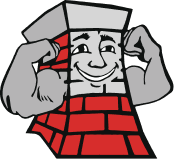Should You Worry about Vines Climbing Up the Chimney?
 Ivy climbing up the brick walls of a beautiful Connecticut home can look idyllic. Under the surface, the glossy green vines may be causing serious structural damage to the home. This is why you should be cautious about planting ivy around your house and might have reason to worry if it is already climbing up the walls and the chimney.
Ivy climbing up the brick walls of a beautiful Connecticut home can look idyllic. Under the surface, the glossy green vines may be causing serious structural damage to the home. This is why you should be cautious about planting ivy around your house and might have reason to worry if it is already climbing up the walls and the chimney.
The Problem With Ivy
The reason why ivy can cause structural damage is because the tendrils that latch onto the wall can grow into and through the mortar and bricks. As they grow deeper into the masonry, they weaken the structure of the walls and chimney. They also create pathways for pests, like carpenter ants and termites, and moisture to enter. Moisture can cause a wide range of damage from further eroding the masonry to rotting wood and engendering mold growth.
Ivy damage on the chimney poses a unique threat because it increases the risk of a house fire and carbon monoxide poisoning. If ivy and moisture cause the flue liner to crack and break, it will create pathways for a chimney fire to spread to other parts of your home. Carbon monoxide, a dangerous odorless and tasteless gas produced by burning wood and other fuels, will also be able to leak into your home instead of venting out the top of the chimney like it should putting your family at risk of poisoning.
Selecting the Right Ivy
If you have your heart set on growing ivy, be sure to follow these two guidelines:
• Plant a twining vine instead of a vine with tendrils. Twining vines are usually safer because they twist and spiral up, clinging to cords or wire, instead of walls.
• Avoid invasive species of ivy. Species of ivy like English ivy spread quickly and choke out other plants. They also cause serious damage to homes. That is why English ivy is banned in many communities.
Removing Ivy
 If ivy is already growing along the sides of your home, contact a professional to remove it. The tiny roots or tendrils that grow into the walls and mortar stick like glue. They can leave behind a fuzzy mess of tendrils that are difficult to remove without damaging the walls. Also, if it is growing on masonry walls, instead of siding, large chunks of bricks and mortar may fall off as you remove it. A professional will know the best ways to remove it while causing the least amount of harm to your home. You should have any damage to the masonry repaired quickly so that moisture and pests can’t continue to creep into your home.
If ivy is already growing along the sides of your home, contact a professional to remove it. The tiny roots or tendrils that grow into the walls and mortar stick like glue. They can leave behind a fuzzy mess of tendrils that are difficult to remove without damaging the walls. Also, if it is growing on masonry walls, instead of siding, large chunks of bricks and mortar may fall off as you remove it. A professional will know the best ways to remove it while causing the least amount of harm to your home. You should have any damage to the masonry repaired quickly so that moisture and pests can’t continue to creep into your home.
It is smart to call on a (Chimney Safety Institute of America) qualified chimney inspector and technician to inspect your chimney if ivy has been growing on it. Internal and structural damage to the chimney is a serious safety hazard. qualified chimney professionals have the knowledge and equipment to do a thorough inspection to find and repair chimney damage caused by ivy.
If you live in Central Connecticut, give us a call! Our qualified chimney specialists at Northeastern Chimney, Inc. have experience repairing chimneys damaged by ivy.


